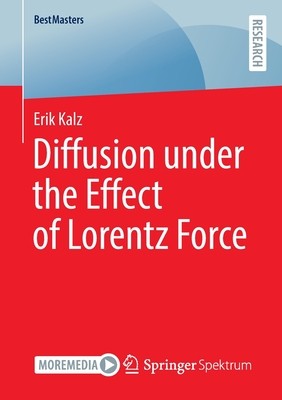
- We will send in 10–14 business days.
- Author: Erik Kalz
- Publisher: Springer Spektrum
- ISBN-10: 3658395176
- ISBN-13: 9783658395179
- Format: 14.8 x 21 x 0.4 cm, minkšti viršeliai
- Language: English
- SAVE -10% with code: EXTRA
Reviews
Description
It is generally believed that collisions of particles reduce the self-diffusion coefficient. In this book, Erik Kalz shows that in classical systems under the effect of Lorentz force, which are characterized by diffusion tensors with antisymmetric elements, collisions surprisingly can enhance self-diffusion. In these systems, due to an inherent curving effect, the motion of particles is facilitated, instead of hindered by collisions. Consistent with this the author finds that the collective diffusion remains unaffected. Using a geometric model, he theoretically predicts a magnetic field governed crossover from a reduced to an enhanced self-diffusion. The physical interpretation is quantitatively supported by the force autocorrelation function, which turns negative with increasing the magnetic field. Using Brownian-dynamics simulations, he validates the predictions.
EXTRA 10 % discount with code: EXTRA
The promotion ends in 22d.20:43:18
The discount code is valid when purchasing from 10 €. Discounts do not stack.
- Author: Erik Kalz
- Publisher: Springer Spektrum
- ISBN-10: 3658395176
- ISBN-13: 9783658395179
- Format: 14.8 x 21 x 0.4 cm, minkšti viršeliai
- Language: English English
It is generally believed that collisions of particles reduce the self-diffusion coefficient. In this book, Erik Kalz shows that in classical systems under the effect of Lorentz force, which are characterized by diffusion tensors with antisymmetric elements, collisions surprisingly can enhance self-diffusion. In these systems, due to an inherent curving effect, the motion of particles is facilitated, instead of hindered by collisions. Consistent with this the author finds that the collective diffusion remains unaffected. Using a geometric model, he theoretically predicts a magnetic field governed crossover from a reduced to an enhanced self-diffusion. The physical interpretation is quantitatively supported by the force autocorrelation function, which turns negative with increasing the magnetic field. Using Brownian-dynamics simulations, he validates the predictions.


Reviews